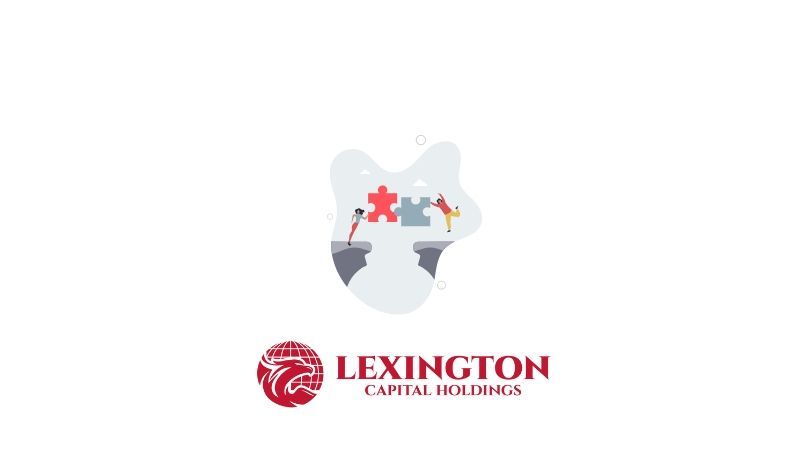Navigating the TikTok Ban: What Business Owners Can Do to Keep Thriving
Navigating the TikTok Ban: What Business Owners Can Do to Keep Thriving
With Congress pushing for TikTok to be removed from app stores by January 19th, many business owners who rely on the app for marketing, customer engagement, and sales are left wondering: What’s next? TikTok has been a powerful tool for businesses, but its potential removal highlights the importance of diversifying strategies and exploring alternative avenues.
Here are actionable steps and tips to help business owners keep their businesses thriving, even without TikTok:
1. Diversify Your Social Media Strategy
While TikTok has been a unique platform for short-form video, it’s not the only player in town. Other platforms have quickly adapted to fill this gap, offering businesses similar tools to engage their audience:
- Instagram Reels: With its visual-first focus and massive audience, Reels is a natural transition for businesses. Many TikTok trends and strategies already perform well here.
- YouTube Shorts: As part of the world’s second-largest search engine, YouTube Shorts allows your videos to gain traction and reach a broader audience.
- Facebook Stories and Reels: Leverage Facebook’s established user base to maintain connections and increase engagement with your audience.
- Snapchat Spotlight: For brands targeting a younger demographic, Spotlight offers a short-form video solution similar to TikTok.
Action Tip: Repurpose your existing TikTok content and post it across these platforms. Maintain consistency in your messaging and creativity to keep your audience engaged.
2. Strengthen Your Brand on Owned Platforms
Social media platforms can change overnight, but your website, email list, and blog remain yours. If you’ve relied heavily on TikTok, now is the time to shift focus to platforms you control.
- Build Your Email List: Encourage followers to subscribe to your email list for updates, promotions, and valuable content.
- Enhance Your Website: Make sure your website reflects your brand, offers clear calls-to-action (CTAs), and provides value to your audience.
- Start a Blog: Share insights, updates, and stories that position your brand as an authority in your industry.
Action Tip: Promote your owned platforms in your social media bio and content, encouraging your audience to stay connected outside of TikTok.
3. Leverage Paid Advertising
If organic reach through TikTok disappears, paid advertising can fill the gap. Platforms like Facebook, Instagram, YouTube, and Google Ads offer robust targeting options to help you connect with your ideal audience.
- Facebook and Instagram Ads: These platforms have vast data tools to help you run targeted campaigns that mirror your TikTok audience.
- Google Ads: Use search and display ads to ensure potential customers find you when they need your product or service.
- YouTube Ads: If you’re already creating video content, running ads on YouTube is a natural next step.
Action Tip: Allocate a small budget to test paid campaigns on different platforms and measure what drives the best results.
4. Double Down on Video Content
Short-form video is here to stay—with or without TikTok. The skills you’ve honed creating engaging TikToks can now be used across other platforms. Use this as an opportunity to strengthen your overall video strategy:
- Focus on storytelling and value-driven content.
- Share customer testimonials, product showcases, and behind-the-scenes glimpses.
- Experiment with formats like tutorials, Q&As, and trending challenges.
Action Tip: Use tools like Canva, CapCut, or InShot to easily edit and repurpose videos for multiple platforms.
5. Explore Other Communities and Platforms
While TikTok has been popular, there are other thriving digital spaces where businesses can connect with their audiences:
- LinkedIn: For B2B companies, LinkedIn is a powerful platform for professional networking and content sharing.
- Pinterest: Great for product-based businesses, especially in home decor, fashion, food, and lifestyle niches.
- Reddit: Engage in niche communities and share content where it adds value.
- Podcasts: Consider starting or sponsoring a podcast to expand your reach.
Action Tip: Identify where your target audience spends time and start creating tailored content for that platform.
6. Stay Prepared and Adaptable
The potential removal of TikTok is a reminder that digital platforms can change quickly. The businesses that thrive are the ones that stay adaptable, diversify their efforts, and focus on building long-term connections with their audience.
- Keep an eye on platform updates and emerging trends.
- Test new tools and platforms regularly to stay ahead of the curve.
- Prioritize your customer relationships above all else.
Action Tip:
Use this moment as a chance to strengthen your overall marketing strategy and make your business more resilient.
Final Thoughts
While the future of TikTok remains uncertain, your business doesn’t have to be. By diversifying your strategies, exploring new platforms, and focusing on your owned channels, you can continue reaching your audience and growing your business.
At Lexington Capital Holdings, we understand the importance of staying adaptable in changing times. If your business needs resources to implement these strategies, we’re here to help secure the funding you need to thrive—no matter what changes come your way.
The platforms may change, but your success doesn’t have to.

When you apply for business funding, your application goes through a critical stage—underwriting. This is where lenders evaluate risk and determine whether your business qualifies for financing, and under what terms. Understanding what underwriters look for can help you strengthen your application, avoid delays, and increase your approval odds.

Not every business enjoys a steady stream of income. For many companies—especially those in seasonal industries, contracting, or project-based work—revenue can shift dramatically from month to month. These ups and downs are normal, but they can make managing cash flow, payroll, and operating expenses challenging. At Lexington Capital Holdings, we understand that fluctuating revenue doesn’t mean instability—it just means you need the right financial tools to stay balanced and grow confidently.

The Challenge of Hyper-Growth For many startups, growth isn’t the problem—it’s managing it. Rapid scaling demands capital for hiring, marketing, technology, and operations. But too often, founders find themselves cash-strapped right when they need resources the most. Choosing the right financing strategy can be the difference between sustainable growth and burning out too soon.

When it comes to business financing, the terms you secure are just as important as the funding itself. Lower interest rates, flexible repayment schedules, and higher approval amounts can mean the difference between simply surviving and setting your business up to thrive. The good news? Business owners often have more negotiating power than they realize. At Lexington Capital Holdings, we’ve seen firsthand how preparation and strategy can help secure stronger terms. Here’s how you can do the same:

For many businesses, waiting on customer payments can feel like standing still when you’re ready to move forward. Delayed invoices, extended payment terms, or slow collections create cash flow gaps that make it harder to cover expenses, pay employees, or seize new opportunities. The truth is—even successful, profitable companies face this challenge. The key isn’t avoiding it, but managing it strategically with the right funding solutions

Securing business funding is a milestone—but the real impact comes from how you put that capital to work. Every dollar borrowed should fuel momentum, strengthen operations, and generate measurable returns. Unfortunately, too many businesses stop at “getting approved” and miss the chance to maximize their return on investment (ROI). At Lexington Capital Holdings, we believe funding isn’t just about access to capital—it’s about creating opportunity. Here’s how to ensure your financing delivers the highest ROI:

In today’s fast-paced business environment, standing out from the competition requires more than just great products and services—it takes strategy, timing, and smart financial decisions. One of the most overlooked tools in building and maintaining a competitive advantage is business financing. When leveraged correctly, financing doesn’t just help you “get by”; it can actually position your business to outpace competitors and capture new opportunities.

In business, surprises aren’t a matter of if—they’re a matter of when. Whether it’s a sudden equipment breakdown, an unexpected dip in sales, or a market shift that requires quick adaptation, unforeseen expenses can test even the most successful companies. The difference between thriving and struggling often comes down to how well you’ve prepared.

When most business owners hear the word debt, it sparks feelings of stress or risk. But here’s the truth—debt isn’t always a bad thing. In fact, when managed strategically, debt can become one of the most powerful tools to grow, stabilize, and scale your business. At Lexington Capital Holdings, we work with business owners every day who are navigating this very question: Is taking on debt the right move for me? Let’s break down the difference between “good” and “bad” debt so you can make informed financial decisions.

In today’s business world, financing options are everywhere—but choosing the right path can feel overwhelming. From traditional bank loans to alternative lending solutions, the fine print and fast-changing requirements often leave business owners spending more time deciphering funding terms than actually running their businesses. That’s where the value of a dedicated funding advisor truly shines. At Lexington Capital Holdings, we’ve seen firsthand how personalized guidance can transform the funding experience for business owners of all sizes.

